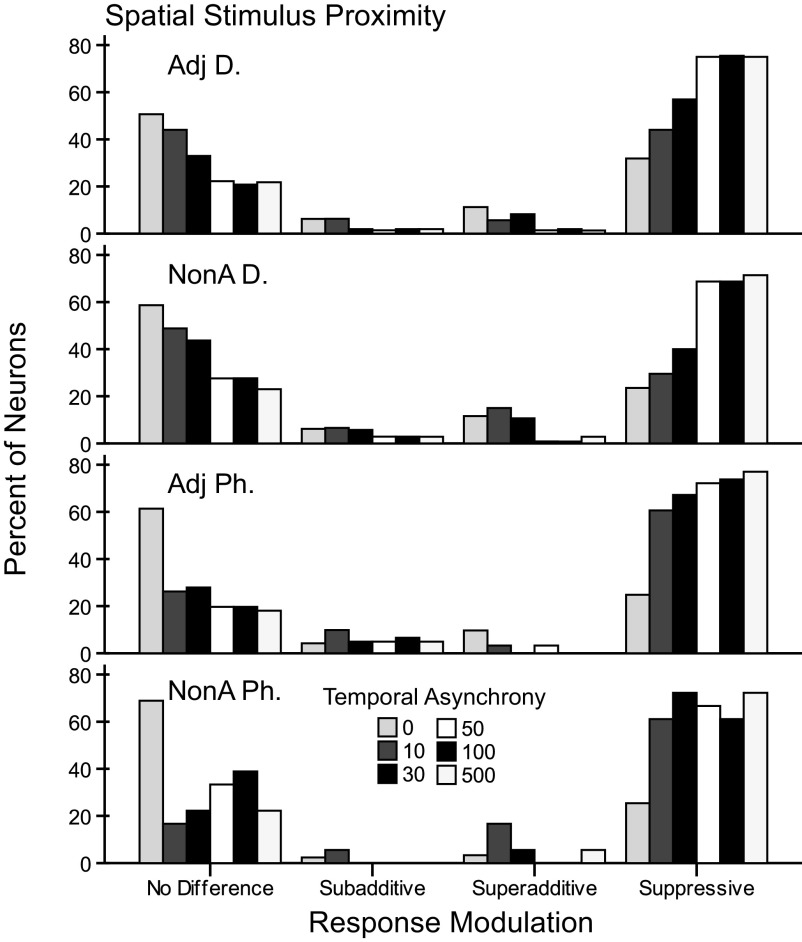Fig. 7.
Percentages of response types for firing rate modulation categorized by spatial and temporal stimulation parameters. Four classes of firing rate modulation in response to paired stimulation occurred in these data: no difference, subadditive, superadditive, and suppressive, and these are displayed on the x axis. Individual bar shades indicate the paired stimulation type referring to the stimulus onset asynchronies in which the preferred stimulus was always presented after the nonpreferred stimulus. The panels show the total counts of these categories for each of the 4 tested stimulus proximity categories. Note that fewer recordings were made for the categories stimulating within a single digit (Adj Ph, NonA Ph). Percent on the y axis refers to the percentage of occurrences of each response type category, calculated within each panel for the four proximity categories. This view of the same data from Fig. 6 shows that when stimuli were presented at short delays (0–30 ms), response types tended to be no difference and facilitative (subadditive, superadditive). At these short delays, paired stimuli presented within a single digit (Adj Ph, NonA Ph) were suppressive modulators of firing rate in greater proportions than when paired stimuli were presented on adjacent or nonadjacent digits.

